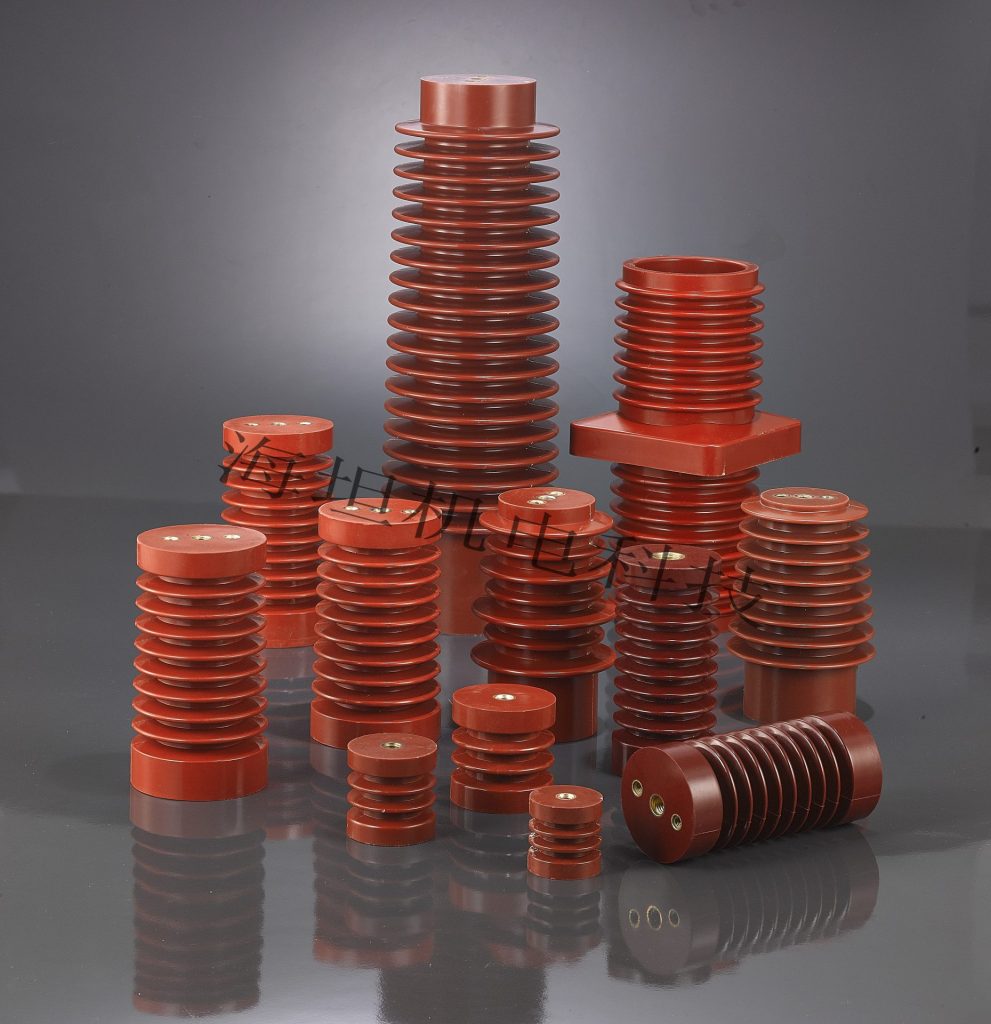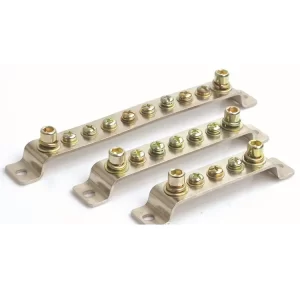Everything You Need to Know About Copper Grounding Bus Bar
Ever wondered what keeps your electrical system safe? The copper grounding bus bar is your answer.
Lightning strikes? Short circuits? Copper grounding bus bar for renewable energy installations. This humble component handles it all. Whether you’re setting up a residential panel, building a data center, managing an industrial facility, or working on renewable energy projects, grounding is the backbone of safety.
The copper grounding bus bar does the heavy lifting. It protects your system, prevents damage, and ensures reliability.
Ready to learn more? Let’s dive in.
The Origin and Evolution of Grounding Bus Bars
Ever wondered what keeps your electrical system safe? The copper grounding bus bar is your answer.
Lightning strikes? Short circuits? This humble component handles it all. Whether you’re setting up a residential panel, building a data center, or managing an industrial facility, grounding is the backbone of safety.
The copper grounding bus bar does the heavy lifting. It protects your system, prevents damage, and ensures reliability.
Ready to learn more? Let’s dive in.
What Does a Copper Grounding Bus Bar Actually Do?
Think of a copper grounding bus bar as a central meeting point for all the grounding wires in your system. Its job? To safely carry fault currents—caused by lightning strikes or electrical malfunctions—directly into the earth, where they can’t harm people or equipment.
Here’s what it helps you achieve:
Divert Fault Currents: Quickly channels short-circuit or lightning energy (up to 200kA) away from your equipment.
Equalise Potential: Ensures all metal parts have the same electrical potential, minimising shock risk and EMI (electromagnetic interference).
Protect Sensitive Devices: Critical in data centers or labs where equipment needs clean, stable grounding.
Resist Corrosion: Copper’s natural corrosion resistance means fewer failures over time.
Simply put: It’s the unsung hero in your electrical safety plan.
Engineering Design & Material Insights
Copper may be king—but it’s not the only player. Let’s compare some options to help you make a confident choice.
| Material Type | Conductivity (% IACS) | Tensile Strength (MPa) | Corrosion Resistance | Typical Applications |
| Pure Copper (C11000) | 100 | 200–250 | Excellent (resistant to acids and alkalis) | Data centers, hospitals, precision control rooms |
| Copper-Clad Steel | 30–40 | 600–800 | Moderate (requires protective coating) | Substations, wind turbine tower foundations |
| Copper–Aluminum | 50–60 | 300–400 | Moderate (aluminum core prone to oxidation) | EV battery packs, energy storage enclosures |
Key Design Points:
- Wider cross-sections (50mm² or more) lower resistance and handle higher currents.
- Tin plating can improve performance in humid or coastal environments.
- Multi-layer composites offer strength and conductivity in one package.
How to Choose the Right Ground Bus Bar Copper
Here’s a practical guide to selecting the right one for your project:
1. Calculate the Required Capacity
Use the formula: I = K × S × t
I = Current (A)
K = Material constant (Copper = 152, CCS = 98)
S = Cross-sectional area (mm²)
t = Duration (sec)
Example: For a 10kA fault lasting 2 seconds, pure copper would need ≥65mm² cross-section.
2. Match to the Environment
Procurement engineers should always evaluate the installation environment when sourcing a copper grounding bus bar. The right material and surface treatment can significantly extend the service life of your system.
Coastal or High-Humidity Areas: Opt for tin-plated or hot-dip copper bus bars. These coatings protect against corrosion and ensure reliable conductivity in aggressive environments.
Cold and Frost-Prone Regions: Prioritise deeper grounding methods (e.g., ≥2.5m depth) and vertical rod integration. Ensure the ground bar structure is frost-resistant.
High-Vibration Applications: In scenarios like manufacturing plants or transport facilities, choose flexible braided copper ground bars or support frames that reduce mechanical stress.
Selecting the correct bus bar grounding solution for the environment not only ensures compliance but also minimises long-term maintenance costs and equipment failure risks.
Where Copper Grounding Bus Bars Are Commonly Used
Understanding where a ground bus bar copper solution fits best can help procurement teams source the right product faster and with confidence.
Data Centers and Precision Facilities
In facilities requiring high uptime and clean signals—such as data centers, control rooms, and hospitals—a pure copper ground bar ensures maximum conductivity and EMI shielding.
Substations and Utility Infrastructure
High-voltage environments like power substations require copper-clad ground bus bars for their mechanical strength and fault-current handling capacity. Their durability makes them ideal for exposed, high-risk locations.
Renewable Energy Installations
Solar farms, wind turbine bases, and battery storage facilities rely on grounding systems to meet surge protection standards. Choosing the right copper grounding bus bar ensures lightning and transient faults are safely discharged.
EV and Smart Grid Applications
Emerging technologies demand space-saving, high-performance components. Copper–aluminum bus bars are increasingly used in electric vehicle battery packs and compact enclosures, offering a cost-effective balance of weight and conductivity.
Each application carries different operational demands. As a procurement engineer, aligning technical specs with project goals will result in safer, more efficient installations.
Compliance Standards to Know
A high-quality copper grounding bus bar should meet these standards:
- UL 467 – Grounding and Bonding Equipment
- IEEE 80 – Safety in AC Substation Grounding
- IEC 62305 – Lightning Protection Standards
- GB 50169 – Chinese national code for electrical grounding
Look for documentation or third-party test reports to ensure compliance.
Installation: Tips From the Field
Installing a ground bus bar isn’t rocket science—but a few tips go a long way:
Mount Securely inside panels using non-conductive bases.
Use Correct Lug Sizes to ensure solid, low-resistance connections.
Label Clearly—especially in larger panels—to ease future maintenance.
Test Resistance after installation. A good grounding system should show low impedance to earth (typically <5Ω).
Maintenance & Troubleshooting
Like any component, the copper ground bar needs occasional TLC:
Inspect connections regularly for looseness or corrosion
Clean surface buildup (oxidation, dust) with approved cleaners
Re-tighten terminals annually as part of preventive maintenance
Replace damaged or heavily corroded sections promptly
FAQs
Q1: Which copper vs. aluminum ground bus bars is better?
Yes. Copper has better conductivity, corrosion resistance, and mechanical strength. It’s ideal for critical or high-performance applications.
Q2: Can I use a copper ground bar outdoors?
Absolutely—just ensure it’s properly coated or plated for weather resistance (e.g., tin-plated or hot-dip copper).
Q3: How do I size a copper ground bar?
Follow the fault current capacity formula, and always err on the side of higher cross-section when in doubt.
Q4: Do I need a grounding tester after installation?
Yes. It’s the only way to confirm your bus bar grounding system is functioning as intended.
Conclusion
The copper grounding bus bar may look simple, but it plays a critical role in electrical safety, system efficiency, and code compliance. Whether you’re grounding a residential circuit or safeguarding a million-dollar data center, choosing the right ground bus bar copper can make all the difference.
Remember: safety starts with a solid connection to the earth—and copper is one of the best tools to make that happen.
Looking for high-quality copper ground bars for your next project? Reach out—we’re here to help you make the right choice.
--- END ---
© Copyright 2024 China Haitan Electromechanical Technology Co., Ltd. All rights reserved.SUPPORT BY:JUNJ Privacy Policy


 E-mail:
E-mail:  No. 20 Lingyun Road, Dongfeng
No. 20 Lingyun Road, Dongfeng 
